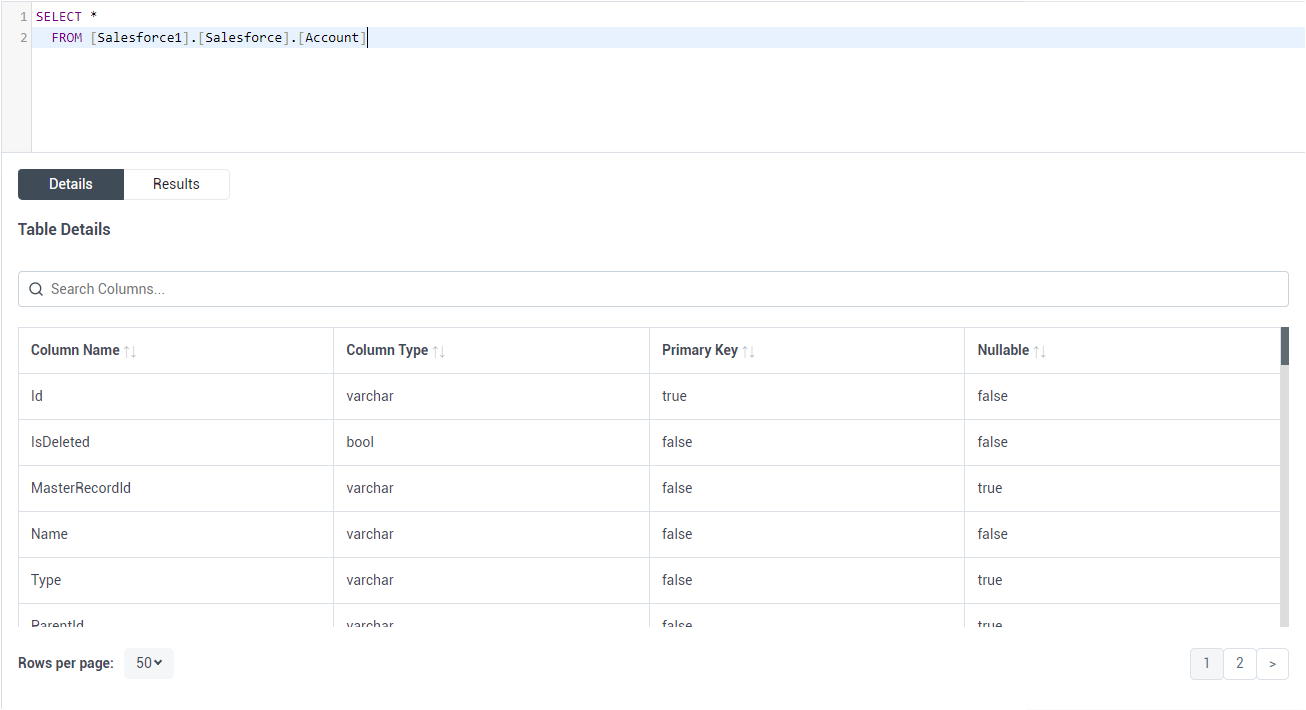Discover how a bimodal integration strategy can address the major data management challenges facing your organization today.
Get the Report →Connect to AlloyDB Data as an External Data Source using PolyBase
Use CData Connect Cloud and PolyBase to create an external data source in SQL Swerver with access to live AlloyDB data.
PolyBase for SQL Server allows you to query external data by using the same Transact-SQL syntax used to query a database table. When paired with the CData ODBC Driver for AlloyDB, you get access to your AlloyDB data directly alongside your SQL Server data. This article describes creating an external data source and external tables to grant access to live AlloyDB data using T-SQL queries.
NOTE: PolyBase is only available on SQL Server 19 and above, and only for Standard SQL Server.
CData Connect Cloud provides a pure SQL Server interface for AlloyDB, allowing you to query data from AlloyDB without replicating the data to a natively supported database. Using optimized data processing out of the box, CData Connect Cloud pushes all supported SQL operations (filters, JOINs, etc.) directly to AlloyDB, leveraging server-side processing to return the requested AlloyDB data quickly.
Configure AlloyDB Connectivity for PolyBase
Connectivity to AlloyDB from PolyBase is made possible through CData Connect Cloud. To work with AlloyDB data from PolyBase, we start by creating and configuring a AlloyDB connection.
- Log into Connect Cloud, click Connections and click Add Connection
- Select "AlloyDB" from the Add Connection panel
-
Enter the necessary authentication properties to connect to AlloyDB.
The following connection properties are usually required in order to connect to AlloyDB.
- Server: The host name or IP of the server hosting the AlloyDB database.
- User: The user which will be used to authenticate with the AlloyDB server.
- Password: The password which will be used to authenticate with the AlloyDB server.
You can also optionally set the following:
- Database: The database to connect to when connecting to the AlloyDB Server. If this is not set, the user's default database will be used.
- Port: The port of the server hosting the AlloyDB database. This property is set to 5432 by default.
Authenticating with Standard Authentication
Standard authentication (using the user/password combination supplied earlier) is the default form of authentication.
No further action is required to leverage Standard Authentication to connect.
Authenticating with pg_hba.conf Auth Schemes
There are additional methods of authentication available which must be enabled in the pg_hba.conf file on the AlloyDB server.
Find instructions about authentication setup on the AlloyDB Server here.
Authenticating with MD5 Authentication
This authentication method must be enabled by setting the auth-method in the pg_hba.conf file to md5.
Authenticating with SASL Authentication
This authentication method must be enabled by setting the auth-method in the pg_hba.conf file to scram-sha-256.
Authenticating with Kerberos
The authentication with Kerberos is initiated by AlloyDB Server when the ∏ is trying to connect to it. You should set up Kerberos on the AlloyDB Server to activate this authentication method. Once you have Kerberos authentication set up on the AlloyDB Server, see the Kerberos section of the help documentation for details on how to authenticate with Kerberos.
![Configuring a connection (Salesforce is shown)]()
- Click Create & Test
-
Navigate to the Permissions tab in the Add AlloyDB Connection page and update the User-based permissions.
![Updating permissions]()


Add a Personal Access Token
If you are connecting from a service, application, platform, or framework that does not support OAuth authentication, you can create a Personal Access Token (PAT) to use for authentication. Best practices would dictate that you create a separate PAT for each service, to maintain granularity of access.
- Click on your username at the top right of the Connect Cloud app and click User Profile.
- On the User Profile page, scroll down to the Personal Access Tokens section and click Create PAT.
- Give your PAT a name and click Create.
- The personal access token is only visible at creation, so be sure to copy it and store it securely for future use.

Create an External Data Source for AlloyDB Data
After configuring the connection, you need to create a credential database for the external data source.
Creating a Credential Database
Execute the following SQL command to create credentials for the external data source connected to AlloyDB data.
NOTE: Set IDENTITY to your Connect Cloud username and set SECRET to your Personal Access Token.
CREATE DATABASE SCOPED CREDENTIAL ConnectCloudCredentials WITH IDENTITY = 'yourusername', SECRET = 'yourPAT';
Create an External Data Source for AlloyDB
Execute a CREATE EXTERNAL DATA SOURCE SQL command to create an external data source for AlloyDB with PolyBase:
CREATE EXTERNAL DATA SOURCE ConnectCloudInstance WITH ( LOCATION = 'sqlserver://tds.cdata.com:14333', PUSHDOWN = ON, CREDENTIAL = ConnectCloudCredentials );
Create External Tables for AlloyDB
After creating the external data source, use CREATE EXTERNAL TABLE statements to link to AlloyDB data from your SQL Server instance. The table column definitions must match those exposed by CData Connect Cloud. You can use the Data Explorer in Connect Cloud to see the table definition.

Sample CREATE TABLE Statement
Execute a CREATE EXTERNAL TABLE SQL command to create the external table(s), using the collation and setting the LOCATION to three-part notation for the connection, catalog, and table. The statement to create an external table based on a AlloyDB Orders would look similar to the following.
CREATE EXTERNAL TABLE Orders( ShipName COLLATE [nvarchar](255) NULL, ShipCity COLLATE [nvarchar](255) NULL, ... ) WITH ( LOCATION='AlloyDB1.AlloyDB.Orders', DATA_SOURCE=ConnectCloudInstance );
Having created external tables for AlloyDB in your SQL Server instance, you are now able to query local and remote data simultaneously. To get live data access to 100+ SaaS, Big Data, and NoSQL sources directly from your SQL Server database, try CData Connect Cloud today!








